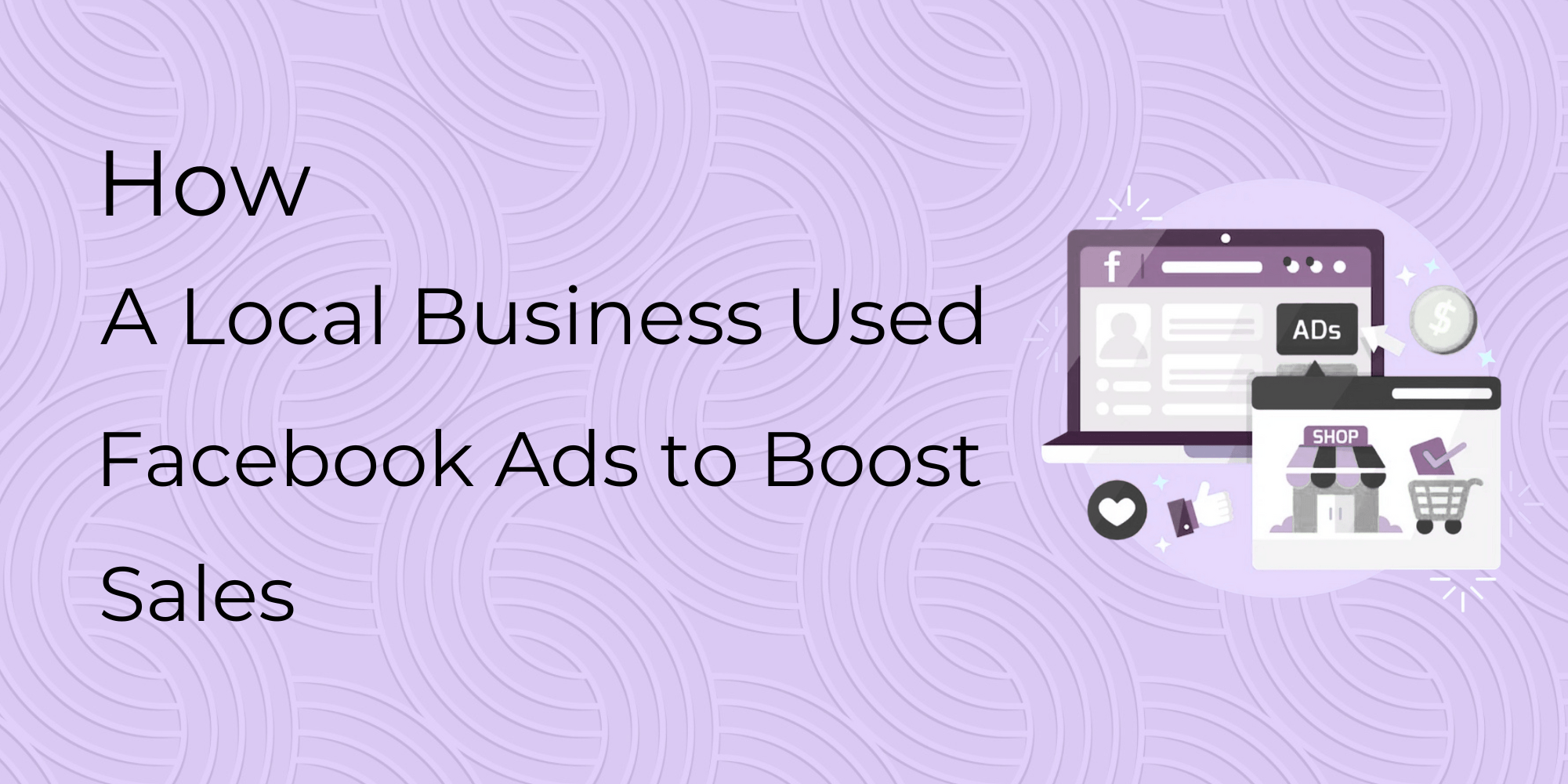With the quickly evolving digital environment of today, local businesses have a challenging task on their hands in terms of keeping their heads above water and competing with bigger, usually better-known brands. However, one effective tool that has proven to be a real game-changer for numerous small enterprises is Facebook advertising. With targeted advertisements, local businesses can access highly relevant audiences, connect with potential clients, and ultimately push sales and growth.
This blog will delve into how a local business effectively used Facebook Ads to drive their sales, step through the process that they did, and present relevant takeaways that can be used by other businesses in the same situation to achieve success.
The Business: A Local Bakery
Let’s begin by discussing the example of a local bakery. In this scenario, we’ll imagine a small bakery located in a busy neighborhood, serving freshly baked goods such as bread, pastries, cakes, and coffee. This bakery, like many local businesses, faced the challenge of attracting new customers while maintaining a loyal base of regulars.
Even with such wonderful products, the bakery was heavily reliant on foot traffic and word of mouth. Yet with the growth of online shopping and a more digital consumer base, the bakery knew that it needed to widen its customer base. They wanted to drive more foot traffic into the store as well as interact with customers online.
The bakery had one purpose in mind: to drive sales and make the brand known.
Step 1: Understanding the Target Audience
The initial key step for the bakery was knowing its target market. Facebook Ads has strong targeting features, and companies can select individual demographics, interests, and behaviors to target the individuals most likely to be interested in their product.
For this bakery, they targeted the following market segments:
- Residents in the area around a 5-mile radius of the bakery location.
- Baking, dessert, and gourmet coffee enthusiasts.
- Young families with children who may be on the lookout for something quick, tasty, and after-school.
- Corporate professionals who require a quick, high-quality breakfast or lunch.
By targeting their audience specifically, the bakery would be able to make highly pertinent ads that directly addressed the requirements and wants of these individuals.
Step 2: Crafting the Right Message
After identifying the target market, the bakery proceeded to the next step: developing a message that would appeal to those potential customers. The bakery recognized that they needed to emphasize fresh, homemade, and quality aspects of their products alongside promotions of special offers.
To differentiate their adverts, they developed a series of campaigns with distinct messages, e.g.:
- Special Deals: Having a “Buy One, Get One Free” offer on featured pastries for new customers.
- Seasonal Sales: Promoting limited seasonal items such as pumpkin spice muffins in the fall or Valentine’s Day cookies.
- Customer Testimonials: Posting customers’ reviews or pictures of customers consuming the bakery’s products. This assisted in creating social proof and trust among new customers.
- Behind-the-Scenes Material: Involving the bakery’s professional bakers preparing new loaves of bread or adorning cakes. This provided a human touch and resonated with people on an emotional level.
The bakery utilized engaging graphics, like tantalizing images of their cakes and pastries, and videos of their bakery operations. Good-quality, salivating photographs are vital for food businesses, since individuals eat first with their eyes!
Step 3: Campaign Setup and Budget Allocation
Then, the bakery also had to budget properly. As a small business, they were very limited in terms of budget, so they needed to be careful when it came to spending on ads.
They set an initial small daily budget and targeted local reach, trusting that Facebook’s algorithm would deliver their ads to the most likely people to interact with them.
The bakery operated the following kinds of campaigns:
- Traffic Campaigns: These campaigns were created to drive users to the bakery’s website or to a dedicated landing page where they could learn more about the menu and view any ongoing promotions.
- Engagement Campaigns: These were aimed at enhancing likes, shares, and comments on their posts, which enhanced organic reach and promoted brand awareness.
- Conversion Campaigns: These were intended to drive sales immediately. The bakery utilized Facebook’s pixel tracking to track activities on their site and retarget individuals who had expressed interest but not made a purchase.
They ensured to try out various advertisement formats—carousel ads of various products, video ads of the baking process, and single-image ads of a highlighted product.
Step 4: Monitoring and Optimization
Once the ads were published, it was time for the bakery to track performance and make adjustments accordingly.
Facebook Ads has a robust dashboard where companies can monitor such major metrics as:
- Reach: How many viewed the ad.
- Engagement: How many liked, shared, or commented on the ad.
- CTR (Click-Through Rate): The number of people who clicked the ad.
- CPC (Cost Per Click): The amount of money the bakery was spending on every click on the ad.
- ROAS (Return on Ad Spend): How much money the bakery made on every dollar of advertising expense.
By continuous monitoring, the bakery was also able to identify trends and refine its campaigns in real time. If, for instance, an ad highlighting a special discount on pastries had high engagement but low conversions, they tweaked the call-to-action (CTA) to make it more impactful.
They tested A/B variations of their ads too, adjusting headlines, imagery, and ad copy to determine which combinations worked best.
Step 5: Scaling the Campaigns
As the bakery began to experience a positive return on investment (ROI) from their Facebook Ads campaigns, they expanded their efforts.
One of the best features of Facebook Ads is the capacity for reaching a large audience without it costing exponentially more. The bakery raised its budget incrementally and added more campaigns to reach other audience segments, including:
- Individuals who had clicked through on their earlier ads but not into the store.
- New residents in the area, focusing on those who had just moved to a new address (Facebook enables advertisers to target these people).
They also retargeted customers who had earlier visited the website or bought from the bakery online. This was an important step in getting repeat business
Step 6: Measuring Success and Analyzing Results
After a few weeks of operating Facebook Ads, the bakery began to notice real returns. Not only were there more people coming into the store, but sales were also up, particularly during the promotion periods.
Some of the most important metrics they tracked are:
- Sales Increase: Sales increased by 20% year over year.
- Increased Customer Retention: The bakery saw that most of the customers who had been contacted via Facebook Ads came back for subsequent purchases.
- Engagement: Their Facebook page received more likes, shares, and comments, increasing brand awareness and encouraging community engagement.
- Website Traffic: The website traffic for the bakery increased threefold during the campaign, especially during promotions, to indicate that the ads were generating interest online.
Although the bakery did not experience overnight fame, it could gradually expand both its online and offline presence. They found that consistency, constant optimization, and the use of Facebook’s features for targeting were essential for success.
Key Takeaways
- Know Your Audience: The bakery was successful by focusing its audience and shaping its message to serve the needs of locals, foodies, families, and working professionals.
- Engaging Visuals and Messaging: Simple, appetizing images and engaging copy were major contributors to grabbing attention and sending sales.
- Spend Smart and Test: Low budgets can be effective if you target the right audience and test various ad formats and campaigns.
- Monitor and Optimize: Tracking performance data regularly enables companies to make required changes and enhance their ad performance.
- Gradually Scale: When you discover what works, scaling up will be even more effective without stressing your budget.
Facebook Ads is not limited to big businesses; small businesses can use its power to generate traffic, boost sales, and create brand awareness. Following the steps described above, the bakery not only increased its sales but also built long-term relationships with customers within its local area.
If you’re a small business owner wondering why Facebook Ads isn’t working for you, begin by learning about your audience, creating an impactful message, and monitoring your outcome. With persistence and planning, Facebook Ads can be the catalyst for your business’s potential growth.
Results: How Facebook Ads Transformed Bella’s Bakery
After several months of running Facebook ads, Bella experienced dramatic results. Here are some highlights:
More Foot Traffic: On average, Bella’s Bakery’s foot traffic rose by 25% on weekdays, as the targeted ads brought in local traffic to the bakery.
More Online Orders: Online orders increased by 40%, especially during promotional seasons such as Valentine’s Day, when a one-day-only discount was offered by Bella.
Increased Revenue: In total, Bella’s Bakery had 30% more revenue throughout the duration of the campaign.
Brand Awareness: Due to the focused nature of Facebook advertisements, more individuals in Bella’s local community were exposed to her bakery, and many new visitors came back for repeat business.
Final Thoughts
Facebook ads have the potential to be a game-changer for small businesses, and Bella’s Bakery is an excellent case study of how small companies can leverage the platform to achieve outcomes. By targeting carefully, producing great ads, and continuously optimizing campaigns, Bella effectively boosted sales, enhanced brand awareness, and expanded her business.
If you’re a local business owner who wants to reach farther, Facebook advertising might be the tool you’re looking for. If you want to drive foot traffic, advertise special deals, or expand your online presence, Facebook offers an affordable yet effective means of reaching your local population.


